


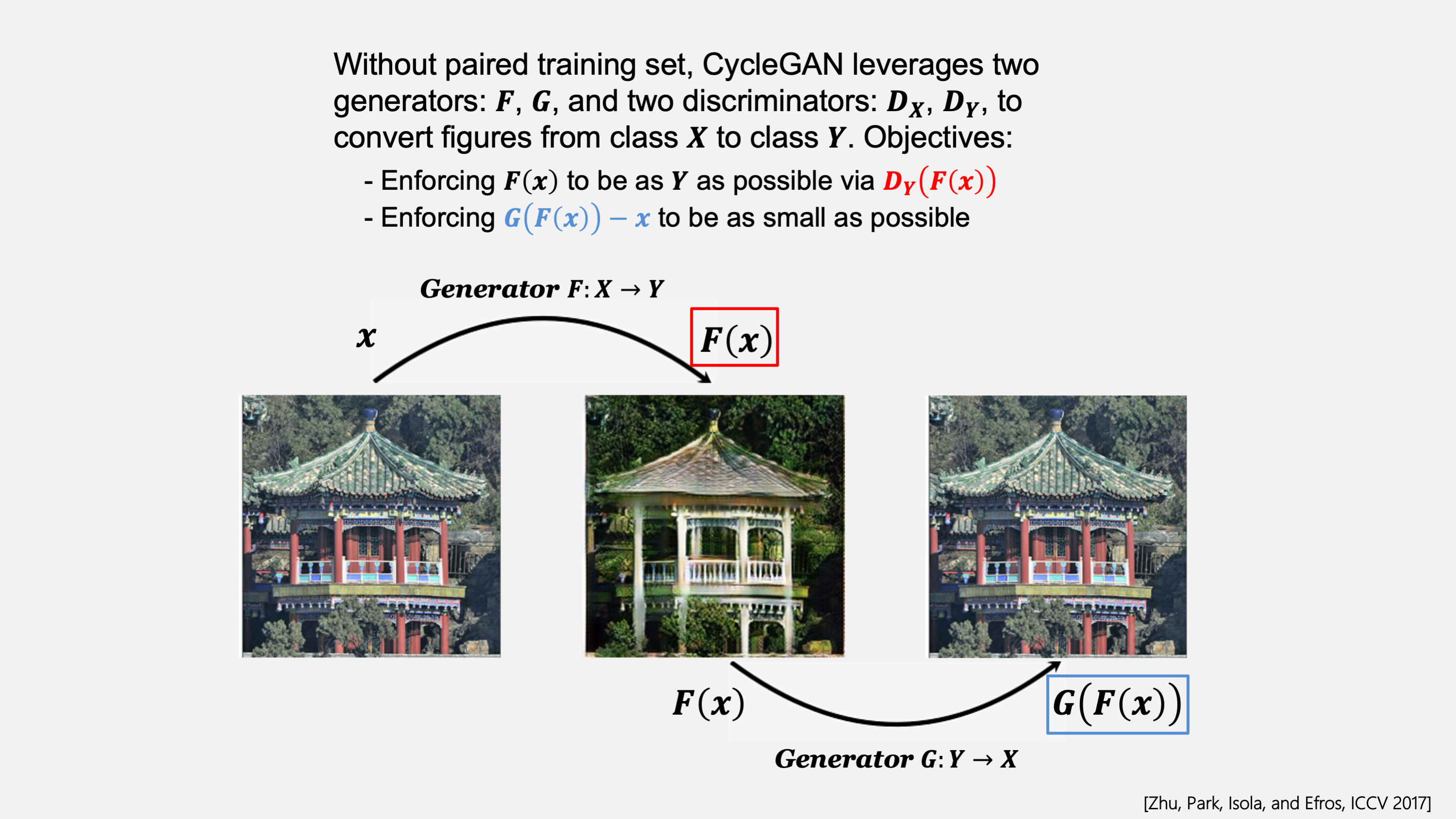
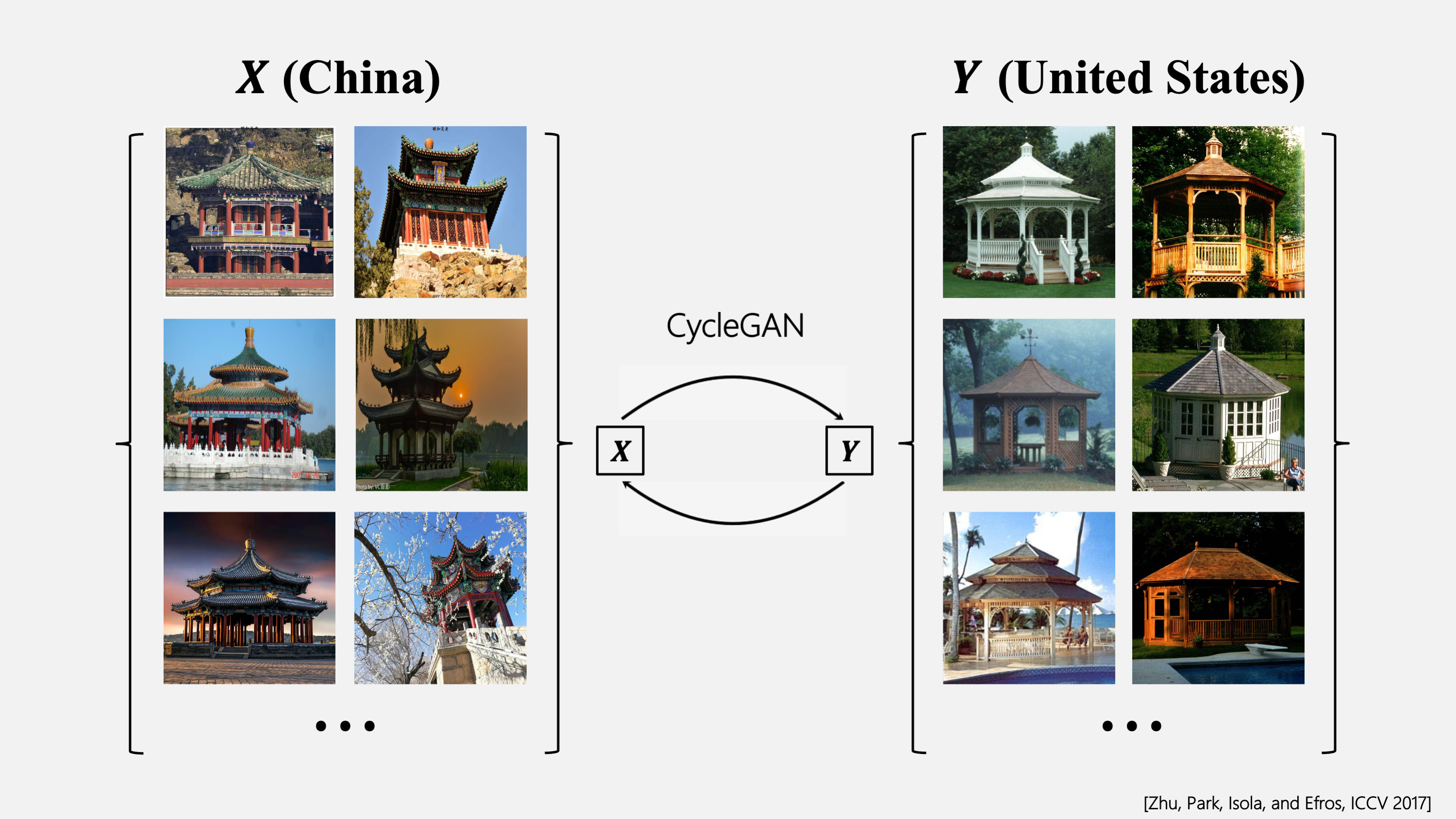
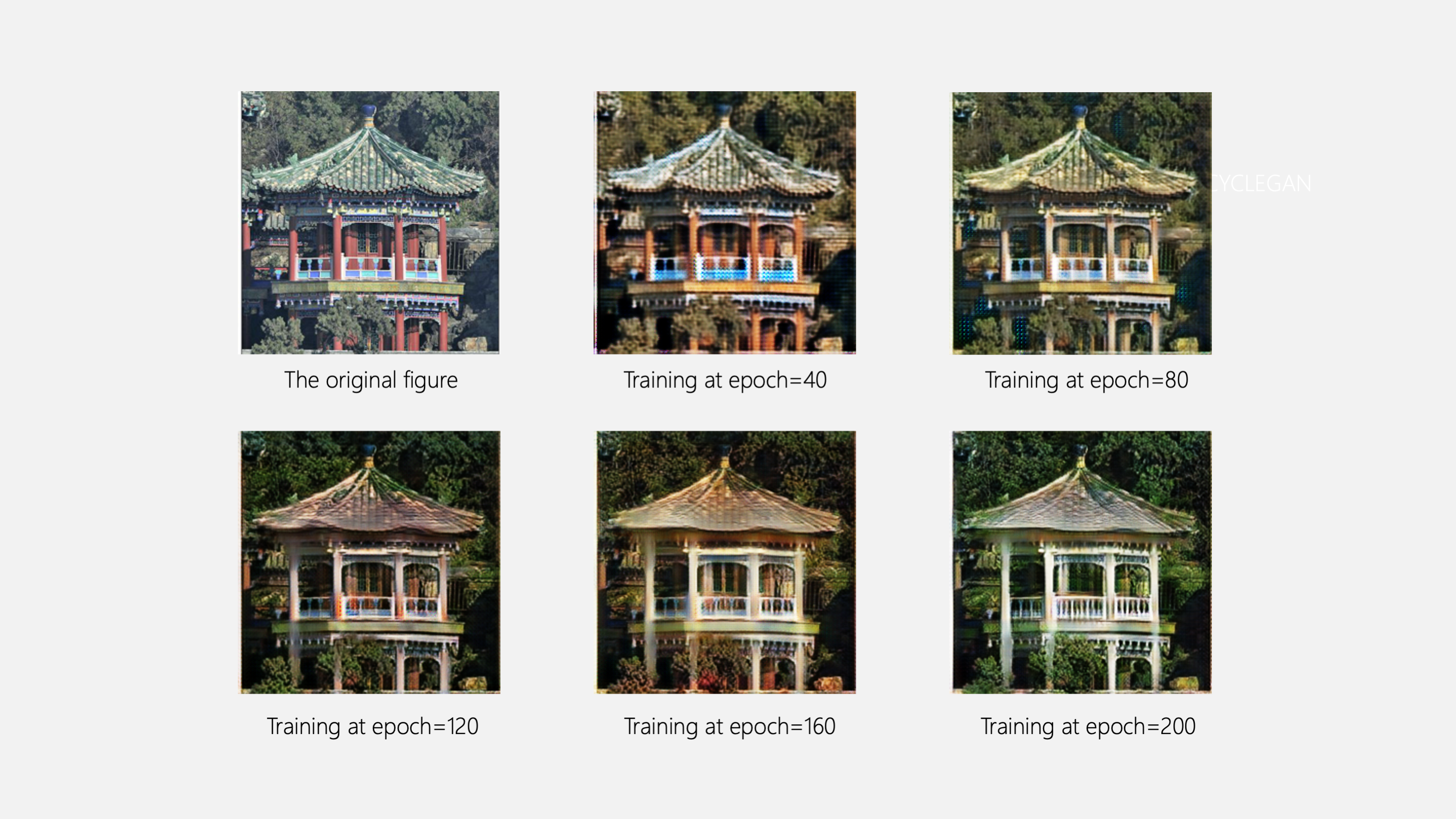
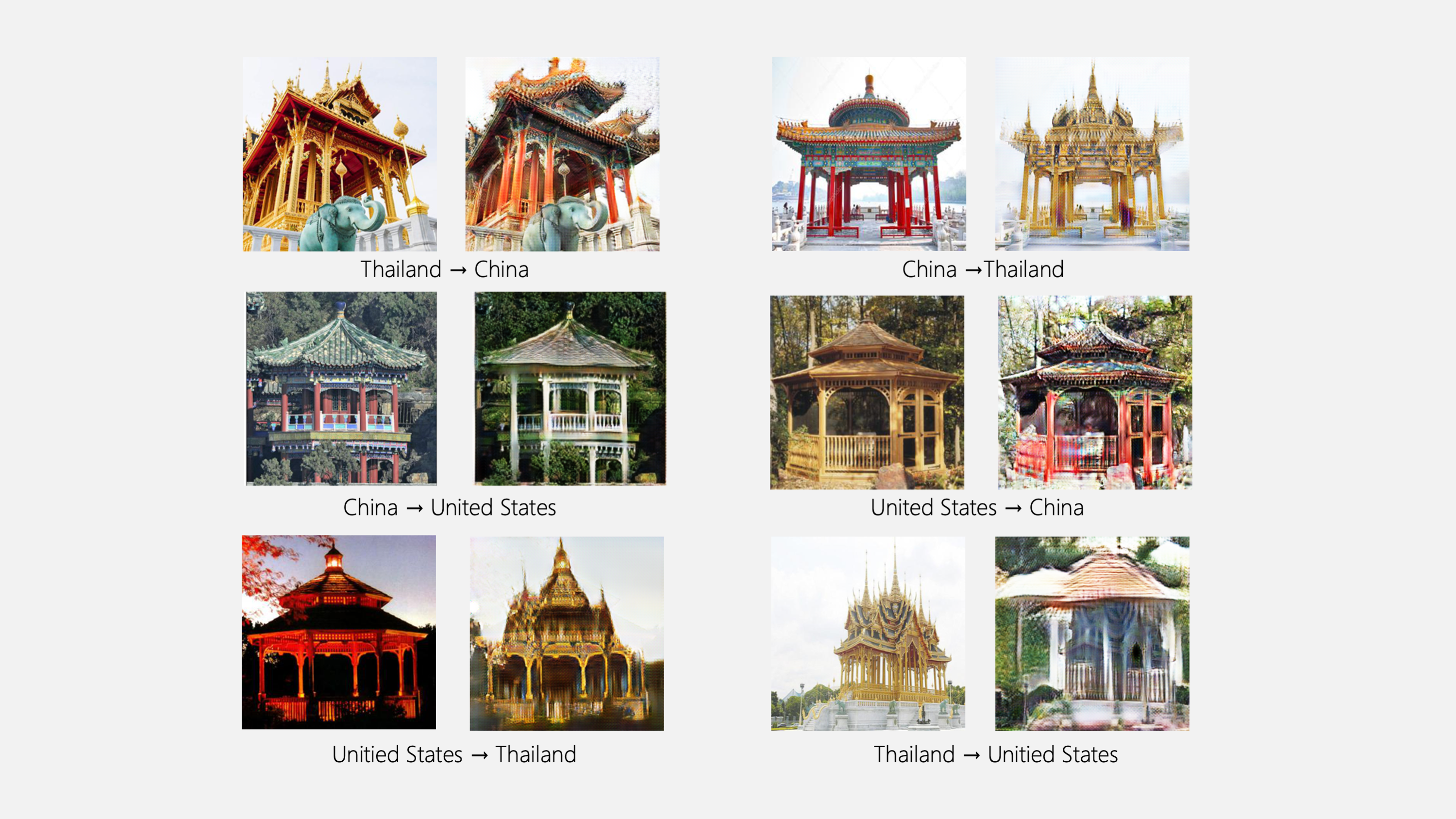














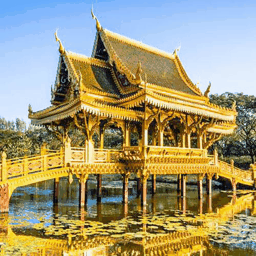
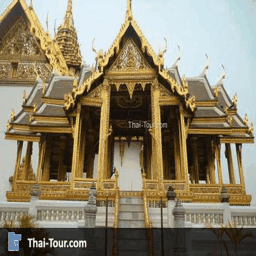

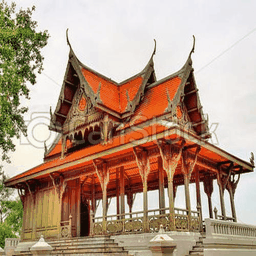



Architecture is a reflection of culture and environment, while a pavilion serves as a miniature architectural unit, a significant carrier of culture. The design presupposes the existence of a world where cultures freely drift and blend, transcending all boundaries. In this world, cultural elements flow and merge without restraint. For the real world, this is a heterotopia. The design creates an interface through weighted fusion of geographic coordinates and cultural symbols with pavilions. Through this interface, we can touch fragments of that world - be it a poem, a postcard, or a travelogue - allowing us to glimpse a corner of a world without cultural borders.
The work envisions a world of cultural fusion, where pavilions carry the integrated characteristics of various civilizations. Participants engage by providing descriptions on a web page, where keywords are captured to extract location information. Through weighted calculations, the corresponding fusion pavilion forms are deduced and presented to participants in the form of postcards or short poems. For example, it can speculate what a pavilion on an unknown island in the Pacific might look like based on the participant's input.




Project outcomes:
- 2023 10th ICIDS (International Conference on Interactive Digital Storytelling), Art Exhibition accepted. Kobe, Japan.
- 2020 OPPO TOP Global University Innovation Technology Competition 5G season, Third prize.
- 2020 Challenge Cup Competition, the only finalist team from the department. student research training program A+.
Collaboration: Zonghan Yang
Acknowledgement: Fan Xiang, Shunshan Zhu